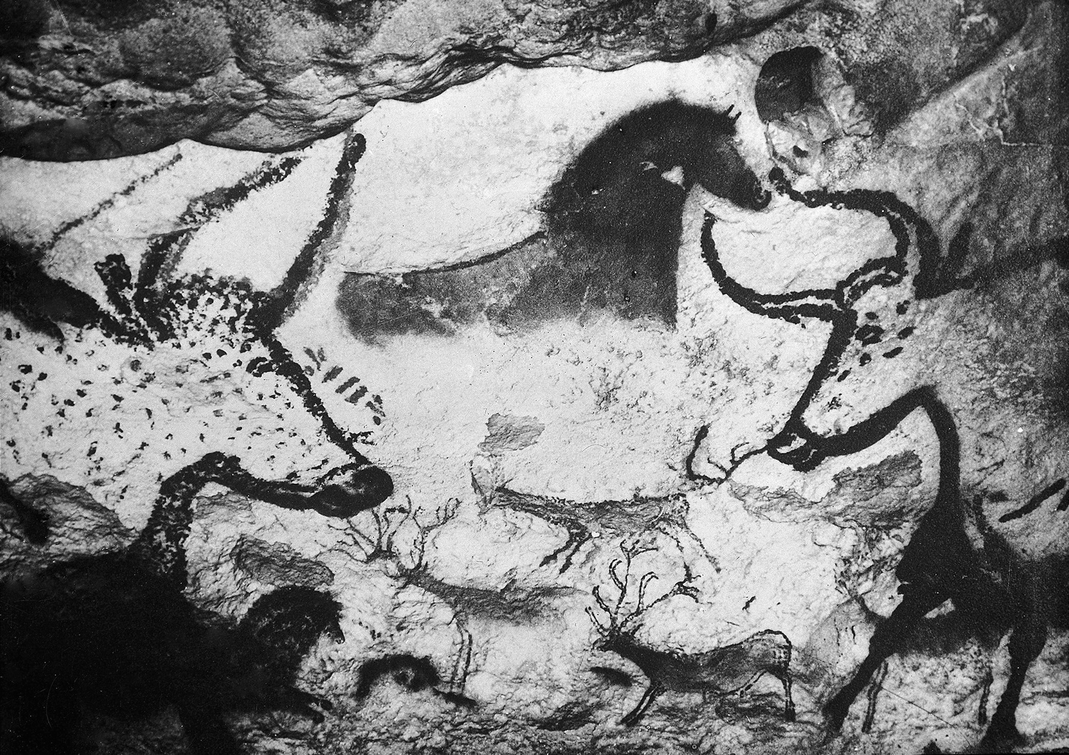
This book is dedicated to James F. Crews.
Every day, people like you and me experience the world. We wake up, pour a cup of coffee, and try to avoid stepping on the cat. Our day has just begun. Thousands of experiences await us, ranging from the trivial to the time-consuming: we peek at our phones and note our busy schedules, or we close our eyes and imagine a long, relaxing vacation under the sun. Some experiences are good. Some are bad. Most are somewhere in between. Yet, despite the many experiences we have, we are often unprepared to design new ones.

Wall painting in the Lascaux Cave. 1
People of all ages design experiences. Young children host elaborate tea parties and build magnificent forts. Adolescents weave elaborate tales of love and struggle via text messages. Later in life, our experiences transform us into who we are—the thrills, the traumas, the grueling boredoms, the sweet seconds, and humbled hours. We become a collection of experiences.
Every culture designs its own experiences. Whereas a Japanese person may use both hands to present a business card during a formal exchange, presenting an item with your left hand is considered an insult in many Muslim countries. Deep within the forests of South Sulawesi, Indonesia, the Torajan people bury their deceased children inside the hollows of living trees, imparting a child’s spirit into the leaves and branches above. American senators ascend their chamber’s aisles to raid candy stockpiled within a designated mahogany desk 2 . Our culture shapes our experiences, and our experiences shape our culture.

Burj Khalifa skyscraper in Dubai. 3
Regardless of age, culture, or occupation, much of what a person experiences is designed—be it a make-believe fort, an Indonesian funeral, or a box of Girl Scout cookies.
Increasingly, the experiences we design are digital. From apps to websites, from emails to video games, often the sole evidence of an experience appears on an illuminated screen. We create tiny worlds that thrive or perish at the whim of a device’s on/off button. We make choices when we design, and based on these choices, our work shines in the daylight or declines into the recesses. The practice of user experience (UX) helps illuminate this uncertain terrain.
User experience fascinates me, but I do not assume you feel the same way. UX books tend to be written by and for UX designers. Few are written to include other roles: project managers, copy editors, graphic designers, and the like. This book is for everyone who works on digital projects. I wrote it with these people in mind. Perhaps this is you. This book seeks to inform and entertain, showing how UX has influenced history as well as our daily lives.
Rather than demonstrate concepts through a barrage of facts and figures, we will learn through stories. Poisonous blowfish, Russian playwrights, tiny angels, Texas sharpshooters, and wilderness wildfires all make an appearance. From 19th century rail workers to UFOs, we will cover a lot of territory, because the experiences that surround us are as broad and varied as every age, culture, and occupation.
What can a massive, WWII-era tank teach us about design? What does a small, blue flower tell us about audiences? What do drunk, French marathoners show us about software?
We start by covering the principles of UX. Next, we move on to being human. Afterward, we delve into a detailed discussion of persuasion. Finally, we wade into the murky waters of process. We talk about how you can navigate through all sorts of projects, what often works and what often does not, and why no philosophy is correct 100% of the time—including that which is found in this book.
By the time you reach the book’s last pages, I hope you will find yourself somewhat changed, discovering new meaning and enjoyment in the experiences you create. This goal is simultaneously selfish and charitable. After all, we sometimes serve as the creators of an experience, but we are far more often the users of one. Experiences have always been this way. They always will be. Therefore, we can celebrate that UX not only enhances the world we now share, but also shapes the future yet to come.
This book would not have been possible without the support of my family, friends, and colleagues. I would like to give special thanks to the following people for their assistance, advice, and encouragement: Robert Abbott, Arsalan Ahmed, Chase Banachowski, Laura Berendson, Robert Beuligmann, Casey Boyer, Brett Yancy Collins, Bill Crews, Dan Crews, Amanda Dempsey, Anthony Dempsey, Rita Fernando, Chris Flinders, Mark Gale, Bob Hale, Christopher Heidger, Sean Johnson, Brent Kaufman, Joe Kirschling, Neil Kulas, Bill Litfin, Jan Maroscher, Roy Nalazek, Stefanie Parkinson, Shiva Ramachandran, Paul Reiher, Nick Rieman, Charles Schmidt, Alberto Scirocco, David Scirocco, Marina Scirocco, Todd Sexton, Jim Smith, Carol Crews Stull, Edward L. Stull, Lalena Stull, Steve Swanson, Marty Vian, Adam Weis, and Emma Young.
Contents
About the Author
is a designer and researcher in Columbus, Ohio, USA. He helps teams work through user experience (UX) challenges ranging from product design to digital marketing. He has assisted numerous international brands, national banks, and state healthcare exchanges. He thinks a lot about how people understand, practice, and sell UX.
